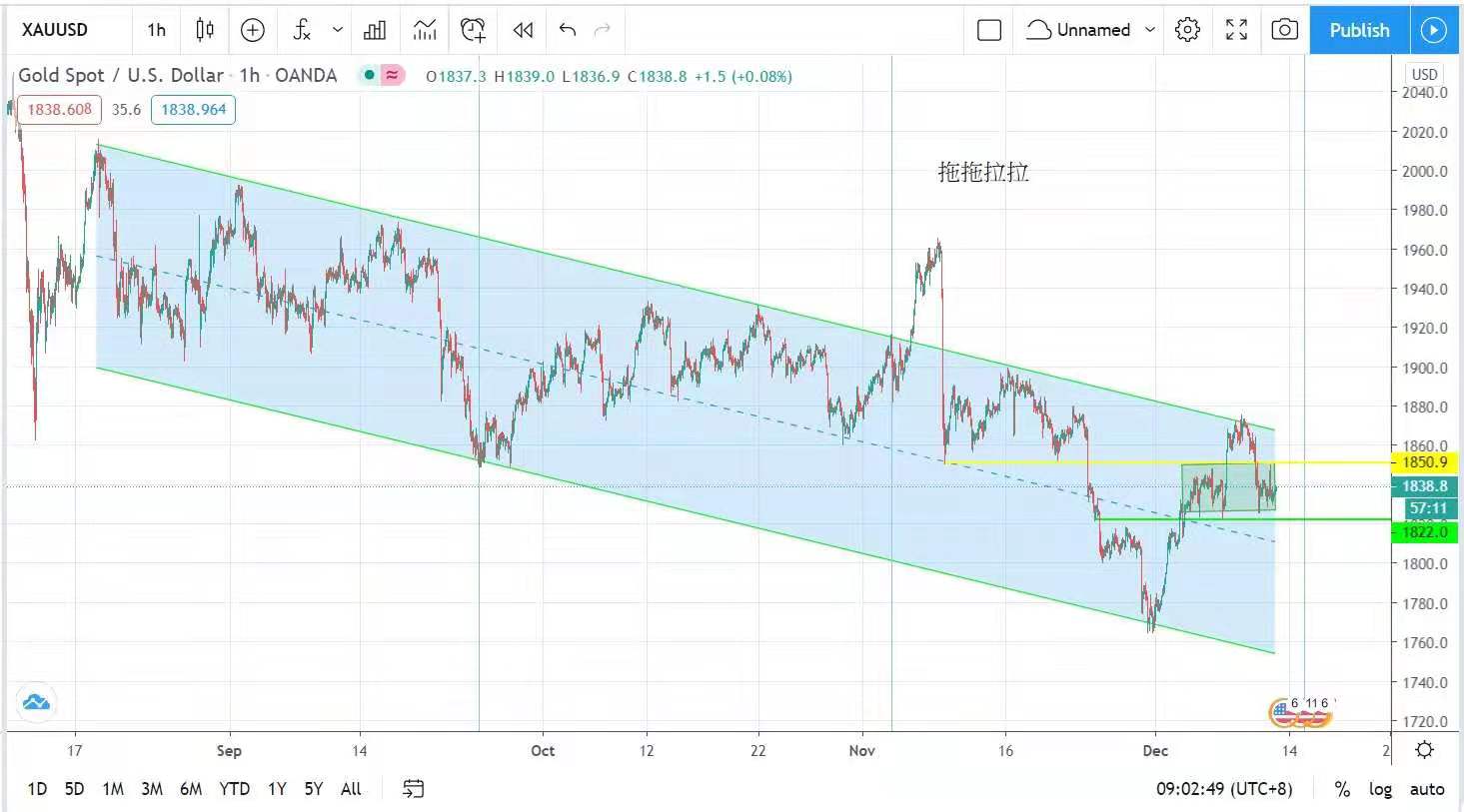Employment data
Today's volatility range:
The second round of relief measures for the epidemic in the United States was blocked, and the optimism of the market was expected to deteriorate. The price of gold rose yesterday through the weak employment data in the United States, but it failed to break through the key level of US$ 1,850, which triggered a technical downward adjustment.
It is expected that the price of gold will still fluctuate today, with the main volatility retaining yesterday's proposal, namely $1,827 to $1,845.
British Prime Minister Johnson was interviewed by the media yesterday. He responded to the meeting with European Commission President Ursula von der Leyen in Brussels, saying that both sides have understood each other's positions and designated this Sunday as the dead line of Brexit negotiations.
They each ordered the negotiators of both sides to try to reach an agreement, but he added that the differences between the two sides are still big and they are not optimistic about the orderly European talks. If the situation really happens, Britain will leave the EU in January next year in the "Australian mode".
That is to say, all trade activities will be carried out in accordance with the practice of the World Trade Organization, except for a small number of goods that can be freely cleared. Johnson previously reiterated that Britain can maintain prosperity under disorderly Brexit.
The British stock market rose for eight days in a row. The Bank of England announced yesterday that the bank could resume the dividend policy, which stimulated the British stock market to rise in the eighth trading day. It rose 0.54% again yesterday, while the British pound fell against the US dollar.
The European Central Bank announced yesterday that it will maintain the main refinancing rate at 0, the deposit convenience rate at -0.5%, and the marginal lending rate of the central bank at 0.25%, but the central bank will expand the scale of anti-epidemic emergency debt purchase to 1.85 trillion euros, an increase of 500 billion euros.
And the bond purchase plan will be extended to March 2022. At the end of the European Central Bank President Lagarde said in his speech that he noticed the progress in vaccine development, but with the rebound of the epidemic, the short-term economy in Europe still faces challenges.
We have to use the monetary policy of increasing quantitative easing to stimulate the euro zone economy. However, she pointed out that the recent appreciation of the euro has caused downward pressure on inflation, which is worrying. However, she added that the central bank will pay close attention to the euro exchange rate, but will not interfere for the time being.
The euro rose again against the US dollar yesterday, and the two major stock markets in the euro zone developed individually. The German DAX index fell by 0.33%; French CAC index got rid of the daily decline and rose by 0.05%.
The novel coronavirus epidemic in the United States continued to deteriorate, with more than 220,000 cases of infection appearing yesterday, and more than 3,000 patients died in a single day for the first time. In terms of data, the number of initial jobless claims in the United States surged to 853,000 last week.
Far exceeding the market expectation, and as many as 230,000 people compared with last week, breaking the highest level since September. Data show that the larger enterprise shutdown measures implemented by the government in order to curb the epidemic are re-causing the unemployment wave and damaging the American economy.
However, the second round of relief measures for the epidemic in the United States was blocked, and the Democratic Party and the Republican Party of the United States dragged on and blamed each other, which made the rescue plan worth 900 billion dollars unable to be approved for a long time. However, the optimism expected by the market this year has deteriorated.
The new york stock market also developed individually, which was affected by employment data, causing negative market reaction, and the Dow Jones index fell 0.23%; The Standard & Poor's 500 Index fell 0.13%; The Nasdaq index rose 0.5%. The second round of relief measures for the epidemic in the United States has been blocked.
The market expects the optimism to deteriorate, and the US dollar index once again falls below 91 points to close at 90.78 points. The gold price once rose to the key level of 1850 US dollars per ounce through weak employment data, but it could not break through, and then it turned down, closing at 1836 US dollars per ounce and then falling by 4 US dollars.
For detailed analysis and operational suggestions, please CLICK the following link to join the group and check with the administrator
https://t.me/joinchat/UHHKFlQVzTCbjfPiBKIOPQ
Previous Article Next Article


 Whatsapp
Whatsapp Telegram
Telegram
